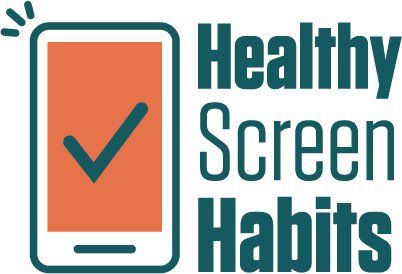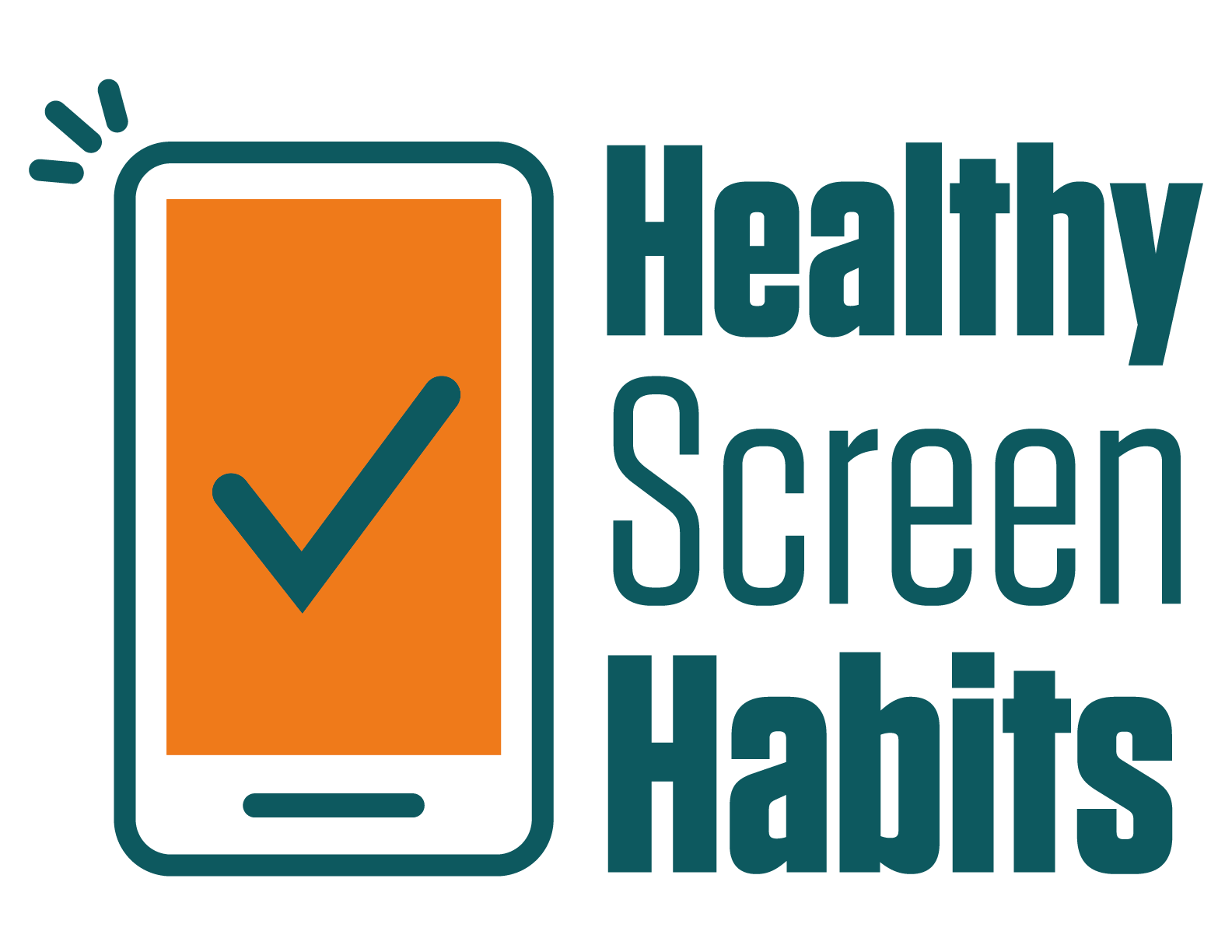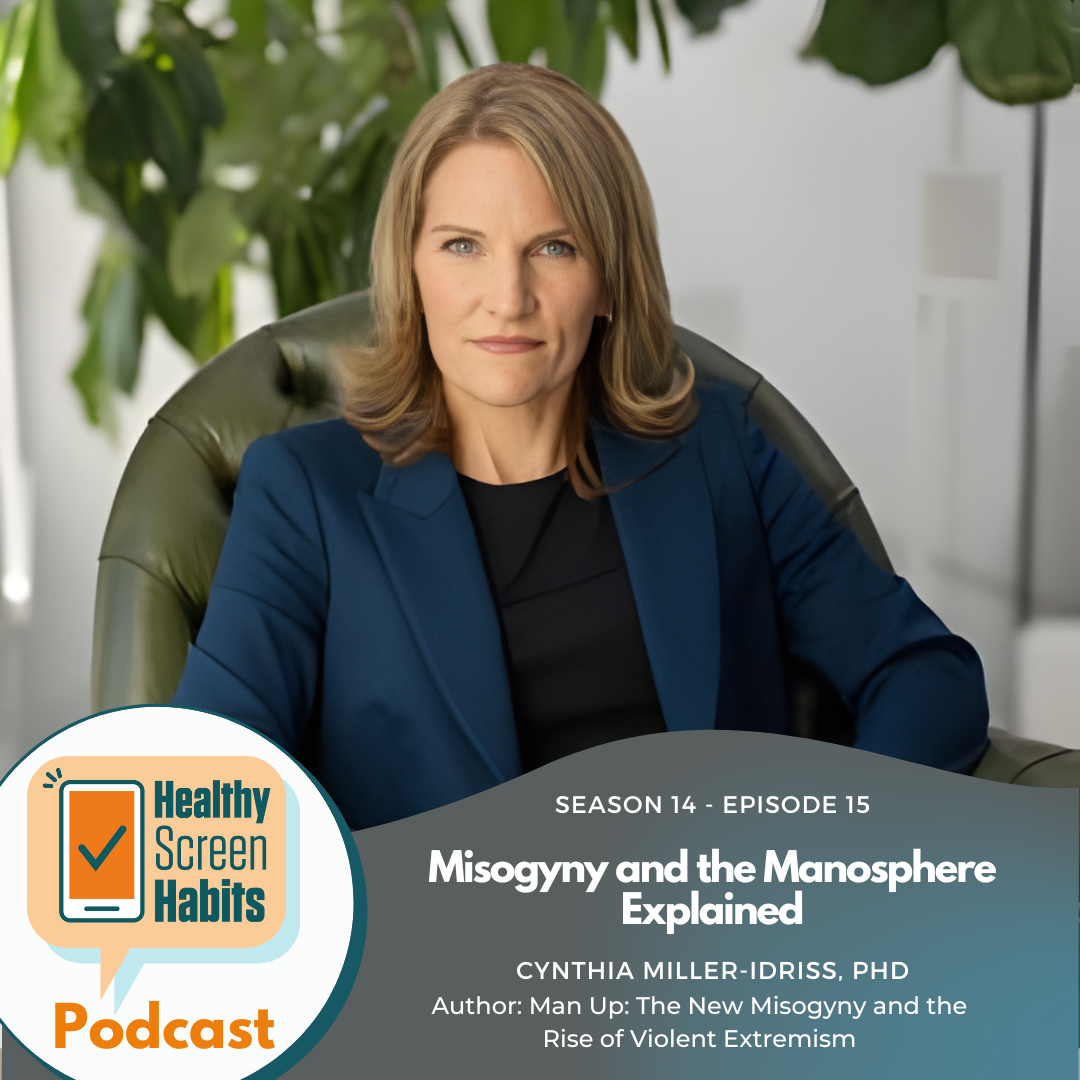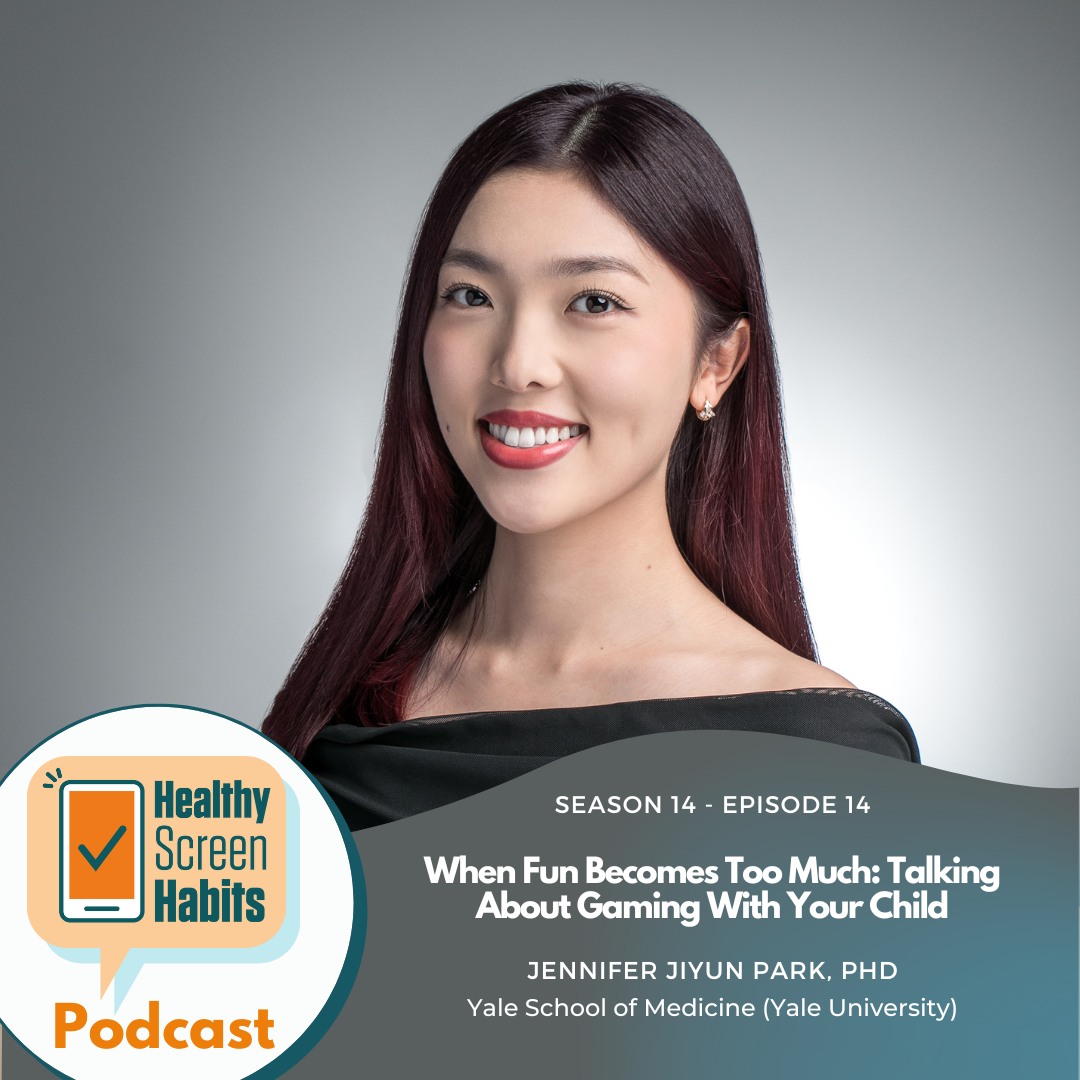S13 Episode 6: Phone Phreedom Summer!! // Dr. Nidhi Gupta
Hosted by Hillary Wilkinson
"Physically separate yourself from your devices 30-90 minutes per day."
~ Dr. Nidhi Gupta
As a board-certified pediatric endocrinologist, TEDx speaker, and a leading expert in digital wellness in Nashville, Tennessee, Dr. Nidhi Gupta is also an award-winning researcher. Her research highlights the profound impact of excessive screen time on both physical and mental health, linking it to many problems we are seeing develop, not just in childhood, but over our whole population. Issues like obesity, sleep disorders, poor communication skills, and learning deficits, all of these findings have positioned her as a trusted voice on the health consequences of digital overuse. On this episode, we discuss all of these things as well as why doing things like simply trying to put our phones down just doesn't work.
Healthy Screen Habits Takeaway
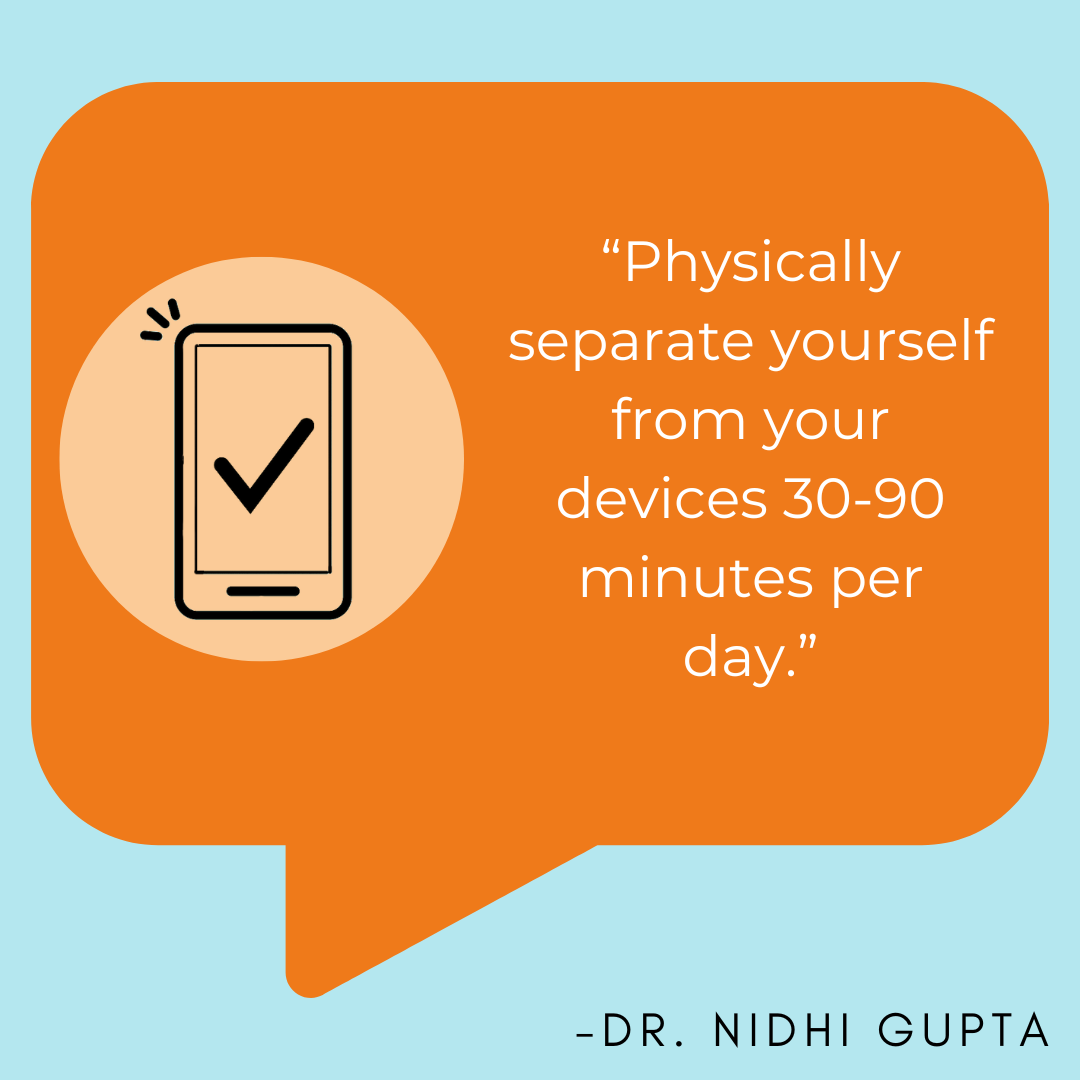
Resources
Phreedom Foundation
Dr. Gupta’s TED Talk:
Show Transcript
Hillary Wilkinson: (00:03)
My guest today is a board-certified pediatric endocrinologist, TEDx speaker, and a leading expert in digital wellness in Nashville, Tennessee. She is also an award-winning researcher. Her research highlights the profound impact of excessive screen time on both physical and mental health, linking it to many problems we are seeing develop, not just in childhood, but over our whole population. I'm talking about things like obesity, sleep disorders, poor communication skills, learning deficits. All of these findings have positioned her as a trusted voice on the health consequences of digital overuse. And today, we are going to learn why doing things like simply trying to put our phones down just doesn't necessarily work. Thank you for being here today, Dr. Nidhi Gupta!.
Dr. Nidhi Gupta: (01:06)
Thank you so much, Hillary. Thank you for having me on your show.
Hillary Wilkinson: (01:10)
I'm so glad you're here. Dr. Gupta, how did you come to focus so much of your professional work on digital wellness?
Dr. Nidhi Gupta: (01:19)
Hillary, about three years ago, I left my dream job at a major hospital here in Tennessee to focus my attention on what I was seeing as an epidemic of screen time-related side effects in my patients. As a pediatrician working with families closely, I'm seeing firsthand the impact of excessive tech use, not just on their physical health, but on their mental health. Let me share a few patient stories that drove me away from my dream job, Hillary. Riley is a 17-year-old young lady. She developed a bedsore in her lower back from being sedentary for hours after school. Immersed in her virtual reality world. Jose is 11. He is up late into the night watching YouTube shorts and reels during which time he's snacking mindlessly and gaining an enormous amount of weight. I recently saw Allison, she is 15. She spends about 40 to 45-ish hours on her phone every day, every week, mostly on social media.
Dr. Nidhi Gupta: (02:25)
And she shrugs her shoulder and she's like, what's a big deal? My friend spend way more time than that. I don't doubt her. I think she's right, but she is developing signs of eating disorder, and she is in denial. And finally, Gary, his parents over this last Christmas break, took away his video gaming equipment because they were done with his eight hours of video gaming every day. They were not prepared for the withdrawal symptoms that followed Hillary. These are just four cases from one small town in Tennessee. And while these might seem to be extreme cases, the concern is elevating in families across the nation at this time.
Hillary Wilkinson: (03:07)
I, I recognize all of those things. You have this interesting kind of, uh, concept of a habit loop that your organization, Phreedom Foundation, works to help disrupt. And can you tell us more about this habit loop and how even how you recommend how people break it?
Dr. Nidhi Gupta: (03:42)
So, Habit Loop is a concept that I cannot take credit for. Thinking of Hillary. First off, this is the, the first time I heard about Habit Loop was in the book Atomic Habits by James Weir. I borrowed that concept to see how that applies to our interaction with our smart devices. So now I have renamed to use it for wireless mobile devices, and I call it the trigger loop of wireless mobile devices. What drives the trigger loop is dopamine, a sneaky neurotransmitter. It's a little juice that is skirted in the brain in response to any reward related cue. Reward related cue, think sugar. Mm, salt, fat spice, think notification. Every time there is a notification on our smart device, the brain squirts that dopamine that makes us crave, what is it? What did I get? What did I get? What did I get? So that cue of notification leads to craving.
Dr. Nidhi Gupta: (04:41)
That craving makes us reach for our device, and it has become an automatic robotics sub condition response. We are not even thinking about it. Every time there is a notification, we are going through the craving, getting the response, reaching for the device. And the final step in the habit loop is reward. We find a reward waiting for us in a very smart device. What might that reward be? It could be a new, like a new post, a new follower, a new comment. And our brain likes rewards. So every time there is a reward, we are waiting for the next queue. Every time there is a queue, we can't wait to get to the next reward. And we find ourselves stuck in this trigger loop of wireless mobile devices. Now Hilary, things have gotten so bad that even if there is no notification on our devices, we still check mm-hmm just in case we missed something that's fomo, the fear of missing out.
Dr. Nidhi Gupta: (05:40)
And we refresh our screens to see if we missed something. And social media never disappoints. There is always something new to be seen. We keep refreshing and when we do see something new, then our brain tells us, “See, you should have checked sooner. There was something waiting for you. Why did you wait three minutes to check the trigger loop of wireless mobile devices?” Now, how do we disrupt it? There are several ways to disrupt it. Number one, delete the queue, the queue of notifications. Number two, curb the craving of the dopamine. Be intentional in your each and every interaction with your device. Number three, weaken the response. We've got to put our devices out of sight, out of mind when we need to focus on work, on family, on kids, on driving. And finally dull the reward. We've got to make our devices boring and enticing. Now, there are several ways to do all of this, and my book is coming out this summer in which I outline in great detail how to break each of these four steps of the trigger loop.
Hillary Wilkinson: (06:49)
Very nice. So when we're talking about tech overuse, like you shared the stories of your patients earlier, even when we're talking to parents about it, many times people tend to be reticent or they're really not comfortable to link the phrase with addiction. And you are quite an expert in this. I have been corrected in the past by referring to something as an addiction. And people have said, ah, I don't like to bring the “A” word into it and this, so I, I just thought I'd take this opportunity to ask you, do you think it is overstepping the mark to call these behaviors that you're seeing of tech overuse an addiction?
Dr. Nidhi Gupta: (07:39)
Not at all. We are not overstepping by calling what we are seeing in our relationship with our devices and addiction. And I, I hear you Hillary. When I started my journey with Phreedom Foundation several years ago, I received similar feedback. Let's not call it an addiction. Let's, let's use a different word. Let's call it dependency, let's call it something else. And I, I, I could see that in the beginning. But now over the last few years with the way things have shaped up, there is no reason to not call these behaviors addiction. Why this statement might seem strong. But everything that I say is backed by research. So based on research, we have now identified several similarities between substance addiction and cell phone addiction. Okay. So let me highlight three similarities between substance addiction and cell phone addiction that might help us accept the usage of the word addiction in the context of smart devices. So the number one similarity is dangerous use in prohibited settings. Someone who has a problematic substance use disorder often tends to use it in dangerous situations when it comes to smartphones. Someone who has a problematic smartphone use disorder often tends to use it in dangerous and prohibited context, such as driving. Mm-hmm
Hillary Wilkinson: (09:10)
.
Dr. Nidhi Gupta: (09:11)
Walking upstairs or going downstairs or riding in the escalator. Dangerous use. Even though they know the short term and the long term harm of doing that, it's hard for them to stop. So if we are unable to stop our craving to do something, that itself is the bottom line definition of addiction. The second similarity: abandonment of usual activities. Someone who might have a substance use disorder often tends to abandon their usual activities. Their entire attention is focused on getting the substance, using it, recovering from the effect of the substance, and then trying to figure out where to get the substance again. Mm-hmm . When it comes to smartphone use, someone who might have an addiction to their smart devices tends to lose interest in everything else. Everything else is boring. It is not as stimulating enough as the content from the devices. And finally, last symptom withdrawal symptoms.
Dr. Nidhi Gupta: (10:18)
We know what withdrawal symptoms look like for, for someone who might have a substance use disorder, what do withdrawal symptoms look like from smartphones? Irritability, anxiety. Mm-hmm . Right? Uneasiness. If we forget our phone inside the house and we are already in the car, we can't go. We've got to get it there. We are attached over devices. We feel anxious when we are not around them. So all that to say no, we are not overstepping by calling a digital addiction what it means to be called. Because what we are seeing in real life, what I'm seeing with my patients on a day-to-day basis, there is no other way to describe it.
Hillary Wilkinson: (10:59)
I can't tell you how validated I feel. . So, so thank you,
Dr. Nidhi Gupta: (11:07)
You're welcome. Hillary.
Hillary Wilkinson: (11:08)
'cause I felt a little gaslit…. I gotta tell ya. . Okay. We have to take a quick break, but when we come back, we're going to talk about how to set up a series of strategies to un-grip devices so we can grip life.
________
Ad break: HSH Workbook
________
Hillary Wilkinson:
I'm speaking with Dr. Gupta who founded the Phreedom Foundation, a nonprofit dedicated to inspiring individuals to reclaim their time and attention, unlocking the joys of life beyond screens. And I just wanna point out, if you're going to look it up, I'm gonna point out the spelling of Freedom Foundation. Freedom is spelled with a P, which is this playful twist on the words freedom and phone. The, the f sound there. If we're going into phonemic awareness , anyways, their mission isn't to give up our smartphones completely. Instead, it's about finding freedom by using our devices more mindfully so they enhance our lives without taking over. And before the break, you did a beautiful job outlining tech overuse as well as some of the consequences that you see in your practice. And can we now kind of dive into the concept of transforming mindsets from the escape de place zone to engaging and replacing?
Dr. Nidhi Gupta: (12:54)
Absolutely. Hilary, that's a theory that I came up with based on what I was seeing. Again, most of my findings are based on what I'm seeing in my clinic. So if given a choice, what would one attend to pick, if we had the option between preparing a PowerPoint presentation versus, let me just scroll social media for a little bit, right? Another example could be exercising at the end of the day versus curling up on the couch because we are so tired, right? So our smart devices are so readily available to help us escape from boring, mundane stress of real life. They help us escape from anxiety, from conflict. And in that unintentional attempt to escape from uneasy situations, we might have displaced some very essential activities in our daily life. Such as sleeping, exercising, media, free family time, schoolwork, office work, focus, driving. How does all of this translate into outcomes?
Dr. Nidhi Gupta: (14:04)
We end up dealing with obesity, sleep disorders, fatigue, mental health, relationship issues, broken families, upward social comparison. What is upward social comparison? Comparing ourselves with everybody else on social media, how their perfect lives. Their perfect bodies seem so much better than anything that we could ever have. It sends us down a spiral of unhealthy mental health patterns. It's important for us to acknowledge that we might be using our devices to escape for stress, anxiety, and boredom. In that process, we are displacing essential activities. What do we need to do instead of escaping? Be mindful and engage with the task and the person in front of you. We've got to do some brain talk here. We've got to tell our mind, you know what, I just checked my phone 15 minutes ago and I'm sure nothing new has changed in the news or in the weather or social media. So I can put my device down and I can actually focus and engage on the task in front of me. The activities that I might have displaced, like exercise and sleep and family time. We need to replace them back into our daily routine. That's the theory of escape displace. To engage, replace.
Hillary Wilkinson: (15:29)
Love it. Love it all. Yes. It speaks directly to our core habit number four, which is to ask, what's my purpose every time you pick up your device. So ask, what's my purpose and how long will it take? So we are rapidly headed into our summer months, right? And so many times, this is when the cry for social media from our teens becomes the loudest . And I, I get it, I get it. People are traveling, friends are separated. It, it becomes a big thing. We strongly stand and recommend holding off on teen personal social media accounts until 16. But are there mistakes that you have seen that you could help people avoid when parenting in the social media age?
Dr. Nidhi Gupta: (16:25)
One of the biggest mistakes, Hillary, that I have seen made in this context, and it's not an intentional mistake. It's coming from a blind spot that we are not aware of. And that is expecting our young people to exercise the force of their willpower to get off social media. Mm-hmm . It does not work. Mm-hmm . Willpower does not work. And why does it not work? Because willpower comes from a part of the brain called the prefrontal cortex. It's right here in the front of the brain. That prefrontal cortex helps us with self-control and self-discipline. It's only 50% developed by the time we are 18 and about fully developed by the time we are in our mid twenties. So expecting a 12 or a 13-year-old child to be able to use the force of their willpower to get off addictive content does not, does not work. The other unintentional mistake that I've seen in this space is blaming our young people for their tech use. While we are unable to regulate our own tech use as grownups mm-hmm
Hillary Wilkinson: (17:34)
.
Dr. Nidhi Gupta: (17:35)
We are setting examples for our kids. They are watching us. If we are at home in the evening after hours bent on our screens, and our kids don't have screens and they are watching us, the message that is going to their brain is that they are less important than what is in our screens. They're less interesting. Then they will throw a tantrum to get over attention. Do they have attention deficit? Of course they have attention deficit. They are, they want the attention. They're not getting it. They have attention deficit. Do they have ADHD? Well, that's a completely different story altogether. So we've got to find the time for real life human connection with our children so that they don't reach for that dopamine.
Hillary Wilkinson: (18:19)
Mm-hmm . Excellent. Yes. And again, our, our organizations are completely aligned and we have tools to help families determine those limits in our free family tech plan. If you're interested, please visit the website and download that tool, customizable for your own family. So Dr. Gupta, you are amazing. You seem to be at the top of your game in all professional areas. Thank you. Plus coordinating community events like unplugged dining events at restaurants, and being incredibly active in all, just all areas. Do you have any strategies? This is totally coming from a selfish place. I, I gotta be honest with you, , I'm all healthy. Screen habits aside, how do you do this? , do you have strategies to help you achieve these levels of productivity and life balance?
Dr. Nidhi Gupta: (19:18)
Oh, thank you Hillary, thank you for acknowledging. It's, it's taken, um, a lot of time and efforts to get to this point where more and more people are aware of this conversation and willing to hear about this conversation. Because quite honestly, technology evolved so quickly in the last decade, Hillary, that parents like us were blindsided. Mm-hmm . Nobody asked us what is the right way to do it. We were just dished out device after device and app after app and content after content. But through organizations like yours and ours, we are finally, I think making a dent in the issue that we are dealing with. So how do I do it? Well, I have a big team, , that that keeps me organized. But personally, I practice what I preach. So I'll share with you a few things that I personally use that help me keep a grip on my time and attention, which is how then I'm able to be creative in helping other families find solutions that work for them.
Dr. Nidhi Gupta: (20:25)
So the first and the most important way is to turn off non-essential notifications. There are badges, there are banners, sounds, vibrations, notifications that show up on the home screen, lock screen notification center. All of that is noise. Turn off the noise, calm the digital noise, which by the way is also the name of my book, which is coming out this summer. Calm the digital noise, calm the noise. So turn off non-essential notifications so your device does not call you 500 times a day. You go to your device when you feel you need to go to your device so that you have control on yourself instead of your device controlling you. Number two, we are an analog wristwatch, not a smartwatch, an analog wristwatch and use an old fashioned alarm clock to set your alarm instead of being dependent on your smartphone as an alarm. And there are reasons why we are doing all of this, why I am recommending all of this. And today we probably do not have the time to go into all of that science behind it, but I'm happy to have that conversation in more detail another time. The third, um, recommendation is delete time consuming applications and content from your devices and from your kids' devices. And that would include video gaming apps, social media apps, news apps, things that are soul sucking and time consuming, things that are not nurturing you, things that are not uplifting you. You, I would highly recommend getting rid of those. And fourth, embrace boredom.
Hillary Wilkinson: (22:07)
Mm-hmm .
Dr. Nidhi Gupta: (22:09)
It's okay to be bored. That's where creativity and focus thrive.
Hillary Wilkinson: (22:15)
Excellent. Well, I have some bad news for me, and that's that even with those things in place at my house, I don't seem to have the level of productivity of yourself except, except the team part. Maybe I just need to, maybe I need to outsource a few things here.
Dr. Nidhi Gupta: (22:34)
Or maybe you and your, you should come attend one of our workshops, a tweet your tech workshops. This is our most favorite and most, uh, asked for workshop. After that workshop. People do not feel that they have a relationship with their devices anymore. They feel free.
Hillary Wilkinson: (22:50)
Yeah, yeah. Absolutely. Free keeping their tech as a tool, not as that emotional safety, security blanket. Yeah.
Dr. Nidhi Gupta: (22:58)
Not as escape, not as entertainment, not as distraction. Using our devices as tools and only as tools, because guess what? That is what they were originally designed to be.
Hillary Wilkinson: (23:09)
Exactly. Originally being the operative word. Okay. We have to take a short break, but when we come back, I am going to ask Dr. Gupta for her healthy screen habit.
—---------------
Ad Break: Bark
—----------------
I am speaking with Dr. Gupta, who is creating a healthier, more connected world through education, advocacy, and practical solutions. Now on every episode of the Healthy Screen Habits podcast, I ask each guest for a healthy screen habit. And this is going to be a tip or takeaway that listeners can put into practice in their own home. What's yours?
Dr. Nidhi Gupta: (23:53)
The biggest one that has made a big difference to how I view digital wellness, not just for everyone else, but for me and my family, is this, physically separating yourself from your devices for at least 30 to 90 minutes every day. Not in your pockets, not in your hands, not in your backpacks. Separated physically. Cutting the cord for at least 30 to 90 minutes every day reduces our dependency and our need to always be connected, to always be on. That gives our brain a time to reset. And in that time we find efficiency, productivity, and joy.
Hillary Wilkinson: (24:42)
I can't, I love it and I can't agree with you more. I, um, got into the habit of when I, I have a, um, beloved black Labrador whom I walk every day. And I used to listen to podcasts while I was doing our, our walk, and I thought, you know, I don't think I'm getting the most out of this activity by continuing input during this time. Like, I really wanted instead to see the seasonal changes around me and connect with my environment and just, you know, spend some time deep breathing in nature and all of that. And so I have stopped taking my phone with me out on my walks and I can't tell you, it has become, it's like I can feel my neurons just like stretching during that time, because I feel so much more creative and just refreshed when we come back. So I, I can't, I cannot recommend that tip enough. I thank you for bringing it to the forefront.
Dr. Nidhi Gupta: (25:52)
Absolutely. Thank you so much, Hillary.
Hillary Wilkinson: (25:54)
Yes. So that is a wrap both on this episode and on season 13. As always, healthy screen habits will be going on hiatus during the summer months to spend time connecting with our own families and creating space to enjoy with each other. You can find a complete transcript of this show as well as a link to the Phreedom Foundation website by visiting the show notes for this episode. You do this by going to healthy screen habits.org. Click the podcast button and scroll to find this episode. I'm also going to recommend that if you are looking for a Fun Family Summertime project, I could not recommend more. The Healthy Screen Habits for Tweens and Teens Workbook 14.99 on Amazon. You can get it there. . Dr. Gupta, thank you so much for being here today and for empowering lives. One family, one screen at a time, and I mean, that's, that's how we're all making progress.
Dr. Nidhi Gupta: (27:00)
Thank you so much. It was a pleasure being on your show today.
About the podcast host, Hillary Wilkinson
Hillary found the need to take a big look at technology when her children began asking for their own devices. Quickly overwhelmed, she found that the hard and fast rules in other areas of life became difficult to uphold in the digital world. As a teacher and a mom of 2 teens, Hillary believes the key to healthy screen habits lies in empowering our kids through education and awareness.
Parenting is hard. Technology can make it tricky. Hillary uses this podcast to help bring these areas together to help all families create healthy screen habits.
